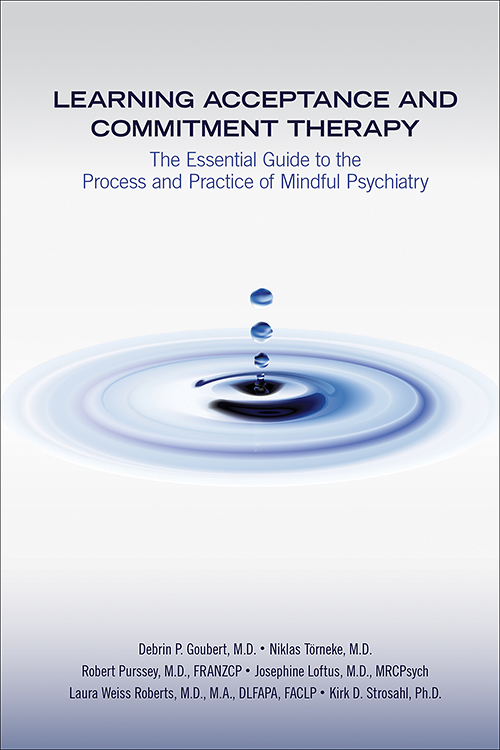Sections
Excerpt
Now that you, the psychiatrist, have learned the basic dance steps of the CARE model, it is time to learn some of the more advanced twists and spins available to you in the ACT approach. Recall that in Chapter 2 we described three basic mechanisms that promote psychological resilience: 1) the ability to be self-aware in the context of one’s own responding and establish the perspective needed to assess whether those responses are working (context sensitivity/workability); 2) the ability to establish a safe observational distance from distressing, unwanted private experiences to diminish the regulatory influence of unworkable self-instructions triggered by those experiences (openness); and 3) the ability to connect with and articulate personal values and then organize ever-widening patterns of behavior around those values (engagement). As you go through the various components of the CARE interview sequence, seize every opportunity to instigate positive change in one or more of these three core areas. Think of the CARE model as notes of music on the page that set the basic rhythm to be followed and of the clinical interventions you select as the therapeutic conversation unfolds as dance steps to be followed. Any type of dance is difficult to do without a basic rhythm, but once that rhythm is established, you are ready to practice some advanced dance moves.
Access content
To read the fulltext, please use one of the options below to sign in or purchase access.- Personal login
- Institutional Login
- Sign in via OpenAthens
- Register for access
-
Please login/register if you wish to pair your device and check access availability.
Not a subscriber?
PsychiatryOnline subscription options offer access to the DSM-5 library, books, journals, CME, and patient resources. This all-in-one virtual library provides psychiatrists and mental health professionals with key resources for diagnosis, treatment, research, and professional development.
Need more help? PsychiatryOnline Customer Service may be reached by emailing [email protected] or by calling 800-368-5777 (in the U.S.) or 703-907-7322 (outside the U.S.).



